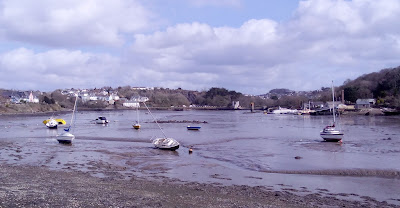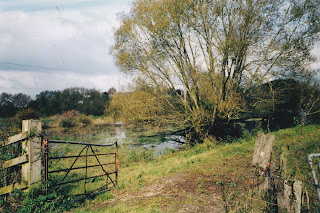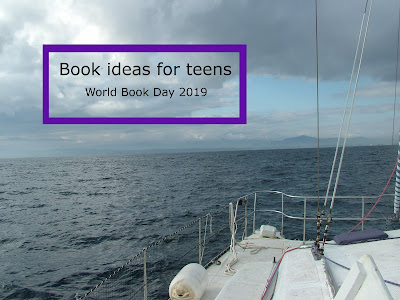Big moon, big tides
 |
| Tide's out |
I've written about tides several times before because they are such an important part of our lives and I find them fascinating. In South Devon the tidal range is around 1.42m and 3.64m (4.6-11.9 feet). Further up the English coast my home town on the Bristol Channel experiences the second highest tidal range in the world between 6.5-and a whopping 13 metres (21.3-32.7ft).
Many of you will know that the tide goes in a roughly two
week cycle getting a bigger difference between high and low tide each
day then
works it’s way back down before starting all over again*. We refer to those tides with greater difference as Spring tides and the ones with a smaller difference as Neaps.
 |
| In and out, almost the same spot whilst keeping my feet dry |
The bit that I find really mind blowing is that the gravitational pull of the moon and sun cause bulges in the water on either side of the Earth that we pass through. As the planet revolves every 24 hours we move through deeper and shallower bits creating the effect of water coming in and going out. As they line up directly twice a month that increases the pull (tidal force) causing the bigger bulge and therefore the bigger Spring tides. The cosmic alignment of three or more objects has a great name - syzygy. If ever a word was ready made for scrabble or hangman this is it!
 | |
| In and out, see how the pontoon has risen up the pylon |
There is much more to tides than just water 'coming in' and 'going out'. There are many currents and eddies as the water is forced over and around obstacles such as headlands and competing streams.
The funnel shape of the estuary is the main reason for the Bristol Channel having such a large tidal range as the water is forced into an ever narrowing channel. In other places such as the Mediterranean and the Caribbean there is very little tidal range. Because of this variation there are many nautical almanacs, guides and pilot books that detail the predictable currents and streams at each stage of the tide. Following the information in these guides can make the difference between making land fall at the point you are aiming for or ending up 15 miles down the coast.
 |
| Almanac and tide charts |
Knowing the strength of the tidal streams caused by the 'whooshing' of water around obstacles or through narrow spaces such as between two bodies of land is also important. The speed of the boat over ground is affected by the stream of water (or current) either carrying the boat along giving faster speeds or pushing against the boat slowing or even stopping forward progress.
Whilst the times of high and low tides are very predictable they vary along the coast. There are also some strange local anomalies in places such as double tides caused by the local geography. That is just one reason why local tide tables are vital to stay safe beside the coast. They are usually readily available in local shops, tourist information, chandlers, marina/harbour offices and also on-line. It can be all too easy to get cut off by the tide along a rocky shore with many coves making a knowledge of time and tide vital for safety.
 | |
| Local tide time table |
This is a very brief blog about tides and how they relate to boat life. There is a lot of information on line if you are really interested. There is a very good video on You Tube by Neil deGrasse Tyson, BBC Bitesize have an interesting KS3 page on tides, Wikipedia has some interesting stuff and The National Geographic explain many aspects of Oceanography. Of course there are many other resources out there too. Feel free to comment below if you know of one we might enjoy!
 |
| Sitting at the dock of the bay |
The constantly changing weather, tide, light and seasons mean that there is always something different in the same seascape giving us an ever changing view on the world outside our window.
* Blogging with integrity: A sentence in this blog has been copied and pasted from an earlier blog of ours Our 'beach holiday'. I didn't want to change the words because they said what I wanted them to.




This comment has been removed by a blog administrator.
ReplyDelete